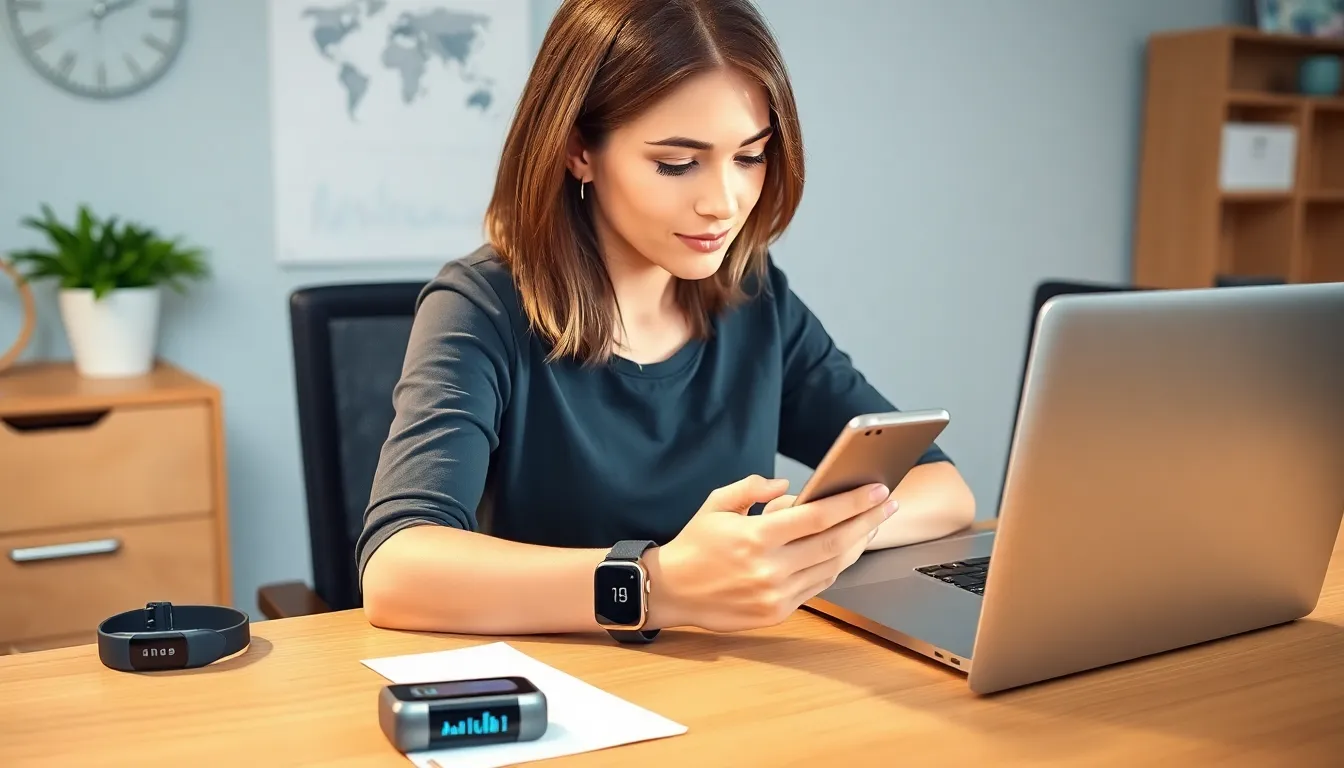In a world where smartphones can track your steps and remind you to drink water, why not let them help manage diabetes too? Digital health tools are revolutionizing diabetes care, making it easier than ever to keep blood sugar levels in check while living life to the fullest. Gone are the days of lugging around a heavy logbook or squinting at tiny numbers on a glucose meter.
Table of Contents
ToggleOverview of Digital Health Tools for Diabetes
Digital health tools transform diabetes management by providing users with a variety of resources. Apps designed for blood sugar tracking enable individuals to monitor their glucose levels in real time. Many smartphones now offer integrated features that facilitate data logging and analysis, simplifying the process significantly.
Wearable devices, such as continuous glucose monitors (CGMs), provide users with constant feedback on their glucose levels. These devices transmit data to smartphones, eliminating the need for manual readings. An array of platforms allows for easy sharing of health data with healthcare providers, promoting collaborative care.
Nutrition-tracking apps assist users in managing their dietary choices. These tools often contain extensive food databases that help in calculating carbohydrate intake, essential for blood sugar control. Additionally, fitness trackers encourage physical activity by providing insights into daily exercise routines, further supporting diabetes management.
Telehealth services enable virtual consultations with healthcare professionals. This accessibility fosters timely interventions and personalized care plans. Moreover, online communities offer support and shared experiences, helping individuals connect with others facing similar challenges.
Digital education resources provide vital information on diabetes management. Webinars, articles, and videos contribute to a deeper understanding of the condition and available treatments. These tools empower users to make informed decisions regarding their health.
The integration of digital health tools enhances diabetes management through convenience, real-time monitoring, and improved communication. By utilizing these technologies, individuals can take proactive steps toward better health and quality of life.
Types of Digital Health Tools

Digital health tools play a crucial role in managing diabetes. These tools encompass mobile applications, wearable devices, and telehealth services, each contributing to improved health outcomes.
Mobile Applications
Mobile applications facilitate blood sugar tracking in real time, making it easier for users to monitor their levels daily. Users can log dietary intake and receive insights into how food affects their blood glucose. Many apps offer customizable reminders for medication, helping maintain adherence to treatment plans. Some applications also provide educational resources about diabetes, empowering users to make informed choices.
Wearable Devices
Wearable devices include continuous glucose monitors (CGMs) that deliver constant feedback on glucose levels. These devices sync with smartphones, allowing for seamless data sharing with healthcare providers. Users can receive alerts for critical glucose changes, enabling timely interventions. Fitness trackers often complement these devices by recording physical activity, which is vital for managing diabetes.
Telehealth Services
Telehealth services offer virtual consultations, removing barriers to accessing healthcare professionals. Users can receive personalized care recommendations without traveling to a clinic. Healthcare providers can monitor patient data remotely, making adjustments to treatment plans as needed. Convenience in scheduling these appointments also enhances adherence to follow-up care, ultimately improving diabetes management.
Benefits of Digital Health Tools for Diabetes
Digital health tools significantly enhance diabetes management through various features. These technologies streamline processes, making it easier for individuals to manage their health effectively.
Improved Monitoring and Management
Digital health tools offer precise monitoring of blood glucose levels. Continuous glucose monitors provide real-time data to users. Users can instantly view glucose fluctuations, allowing for timely adjustments in diet or medication. Mobile applications track dietary intake and link food choices to glucose levels, promoting better decision-making. Many platforms offer data-sharing capabilities with healthcare providers, facilitating personalized treatment adjustments based on real-time insights. This integrated approach empowers users to take control of their diabetes management.
Enhanced Patient Engagement
Digital tools foster greater patient engagement by providing accessible health information. Patients benefit from customizable medication reminders, ensuring adherence to treatment plans. Educational resources in apps equip users with knowledge about diabetes management. Virtual communities provide support, enabling users to connect with others facing similar challenges. Telehealth services further increase engagement through easy access to healthcare professionals, allowing for personalized care plans without travel. Enhanced interaction through these digital platforms motivates users to actively participate in their health, leading to improved outcomes.
Challenges and Considerations
Digital health tools for diabetes present unique challenges that users and developers must navigate. Addressing these challenges ensures effective and secure use of technology in diabetes management.
Data Privacy and Security
Data privacy and security rank among the top concerns for users of digital health tools. Personal health information is sensitive, making protection from unauthorized access crucial. Many applications collect and store data, including glucose levels and dietary habits. Users must choose tools with strong encryption and transparent privacy policies. Understanding how data is shared with third parties also becomes important. Regulatory compliance, such as HIPAA in the United States, ensures minimum standards for data confidentiality. Stakeholders must prioritize ongoing security updates to guard against new threats. Educating users about best practices for safeguarding their data enhances overall safety.
Accessibility Issues
Accessibility issues pose significant barriers for some individuals using digital health tools. Not all users have the same level of technology proficiency or access to internet services. Older adults, in particular, may find navigating mobile apps and wearable devices challenging. Developers must design user-friendly interfaces that accommodate various skill levels. Additionally, affordability of devices and internet connectivity remains a key concern. Limited access to technology exacerbates health disparities among lower-income populations. Ensuring that digital health solutions are available in multiple languages can also enhance usability. Addressing these accessibility challenges promotes equitable access to effective diabetes management tools.
Digital health tools are revolutionizing diabetes management by offering innovative solutions that enhance daily living. With real-time monitoring and personalized care, individuals can take charge of their health like never before. These technologies not only simplify tracking and decision-making but also foster a sense of community and support among users.
As the landscape of diabetes care continues to evolve, embracing these tools is essential for improved health outcomes. By prioritizing data security and accessibility, the future of diabetes management can become even more inclusive and effective. Ultimately, digital health tools empower individuals to lead healthier lives and navigate their diabetes journey with confidence.




